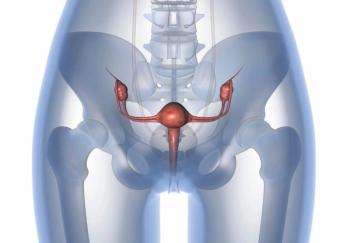
Oncology NEWS International
- Oncology NEWS International Vol 13 No 3
- Volume 13
- Issue 3
Topotecan/Cisplatin Improves Cervical Cancer Survival
SAN DIEGO-For the first time, a combination regimen has shown improved survival over single-agent cisplatin (Platinol) for the treatment of advanced cervical cancer, according to the Gynecologic Oncology Group (GOG) protocol 179, which was presented at the 35th Annual Meeting of the Society of Gynecologic Oncologists (abstract 9).
SAN DIEGOFor the first time, a combination regimen has shown improved survival over single-agent cisplatin (Platinol) for the treatment of advanced cervical cancer, according to the Gynecologic Oncology Group (GOG) protocol 179, which was presented at the 35th Annual Meeting of the Society of Gynecologic Oncologists (abstract 9).
GOG 179, a multicenter phase II trial, showed the combination of topotecan (Hycamtin) plus cisplatin to be superior in multiple outcome parameters over single-agent cisplatin in the treatment of recurrent or persistent cancer of the cervix, reported Harry J. Long, III, MD, associate professor of oncology, Mayo Clinic College of Medicine, Rochester, Minnesota.
According to Dr. Long, because of the superiority of the combination regimen in this study, "topotecan and cisplatin should be considered the new standard for treatment of advanced or recurrent cancer of the cervix." He said that patients who are candidates for chemotherapy should now receive topotecan/cisplatin, rather than single-agent cisplatin. In his opinion, the only exception is the patient with early relapse after primary treatment, who probably will not benefit from the chemotherapy, he said.
GOG 179 involved 356 patients with stage IVB recurrent or persistent carci-noma of the cervix treated between 1999 and 2002 at seven institutions. The study randomized 145 patients to single-agent cisplatin, 50 mg/m2 every 3 weeks, and 148 patients to combination therapy with cisplatin 50 mg/m2 on day 1 plus topotecan 0.75 mg/m2 on days 1 to 3 every 3 weeks. An additional 63 patients were randomized to MVAC (methotrexate/vinblastine/doxorubicin/cisplatin) every 4 weeks, but this arm was closed prematurely due to excessive toxicity and did not yield data for presentation.
More than three quarters of the patients in the study had recurrent disease; nearly 80% received radiation therapy, and almost 60% had received prior cisplatin-based chemotherapy.
Treatment with topotecan plus cisplatin improved not only response rates and progression-free survival but also overall survival, and is the first controlled trial to show this.
Peter G. Rose, MD, of the Cleveland Clinic Foundation, discussant of the paper at the SGO plenary session, noted, "An impact on survival has not been seen until this trial, showing improvements in all the characteristics of response. The benefit is statistically significant for the group overall and also when adjusted for a number of covariates for risk, and there were no adverse effects on quality of life [in the study described below]."
Response rates doubled with topotecan/cisplatin over cisplatin alone. Responses were seen in 36 of 147 patients (27%) on the combination, compared with 18 of 146 (13%) with single-agent therapy (P = .004). There were 14 complete responses with the combination (10%) and 4 (3%) with the single agent. Stable disease was achieved in 45% and 50%, respectively, and progressive disease was seen in 28% vs 37% of patients.
Improvements in response rate translated into survival improvements. Median progression-free survival was signifi-cantly better with the combination (4.6 months vs 2.9 months) as was median overall survival (9.4 months vs 6.5 months). These outcomes yielded hazard ratios of 0.76 for progression-free survival (P = .014) and 0.76 for overall survival (P = .017), for a 24% reduction in the risk of dying in patients taking the combination.
The results were the most favorable in the 40% of patients who had not received prior cisplatin as a radiosensitizer, although prior cisplatin therapy did not hold up as an independent predictor in a multivariate analysis.
Timing of Relapse
Timing of relapse after the primary treatment did prove to be a factor that affected efficacy of treatment. Patients who relapsed early (less than 6 months) had worse outcomes, while the hazard ratios improved progressively by each 6-month interval between initial diagnosis and recurrence. "The time from diagnosis to treatment of recurrent disease does significantly impact both progression-free and overall survival and should be considered an independent risk factor in future clinical trials," Dr. Long suggested.
He noted that 3-year survival was 70% for patients who had no relapses within 3 years of diagnosis. "The best responses to the combination were seen in patients who relapsed the latest," he said.
Toxicities
Grade 3-4 toxicities were similar for the combination and the single agent, except for more hematologic toxicity (70% vs 1%, respectively). Other major toxicities for the combination vs the single agent: anemia, 37% vs 23%; febrile neutropenia/infection, 16% vs 8%; nausea, 13% vs 8%; emesis, 14% vs 8%; and metabolic abnormalities, 12% vs 10%.
In a poster presentation, Bradley J. Monk, MD, of the University of California School of Medicine, Irvine, showed that quality of life was similar between the combination arm and single-agent arm. This was assessed using a number of validated quality-of-life instruments.
"We have a slightly more toxic regimen that is well tolerated and produces a doubling in response and an improve-ment in survival. The only caveat with GOG 179 is that it’s an early first step," Dr. Long commented. "We still have a long way to go before we can say we are curing this disease in its advanced stage."
The findings from this study have led the GOG to mount GOG 204, which will compare topotecan, paclitaxel, vinorelbine (Navelbine), and gemcitabine (Gemzar) in four cisplatin-based doublets.
Articles in this issue
over 17 years ago
Panitumumab effective in normal KRAS subsetabout 21 years ago
XELOX Combination Is ‘Highly Active’ in Biliary System Cancersover 21 years ago
FDA Approves Erbitux for Advanced Colon Caover 21 years ago
FDA Approves Alimta/Cisplatin for Malignant Mesotheliomaover 21 years ago
Multigene Assay Predicts Breast Ca Recurrenceover 21 years ago
Neoadjuvant Therapy Is Promising for Locally Advanced Gastric CancerNewsletter
Stay up to date on recent advances in the multidisciplinary approach to cancer.



















































































